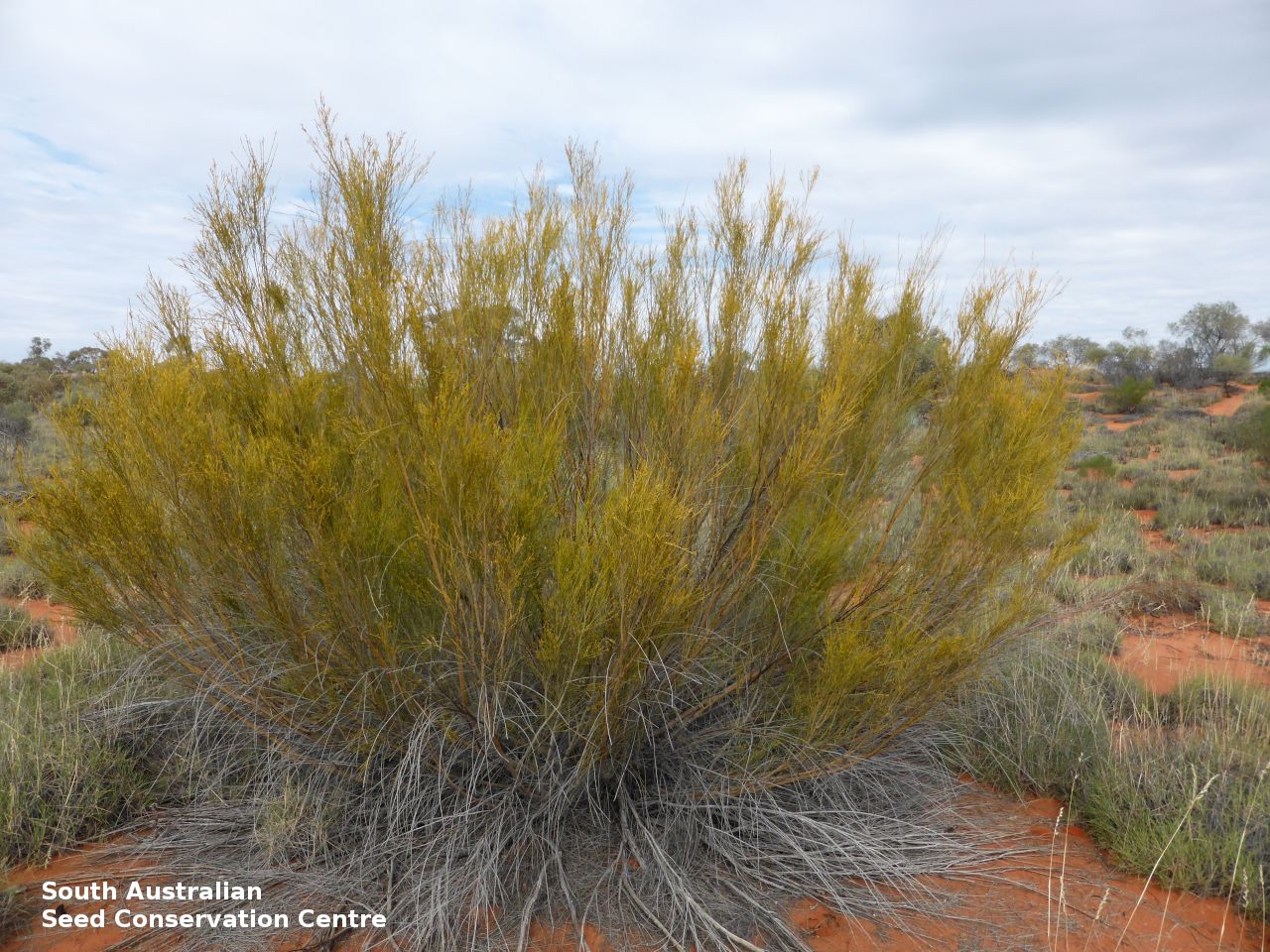
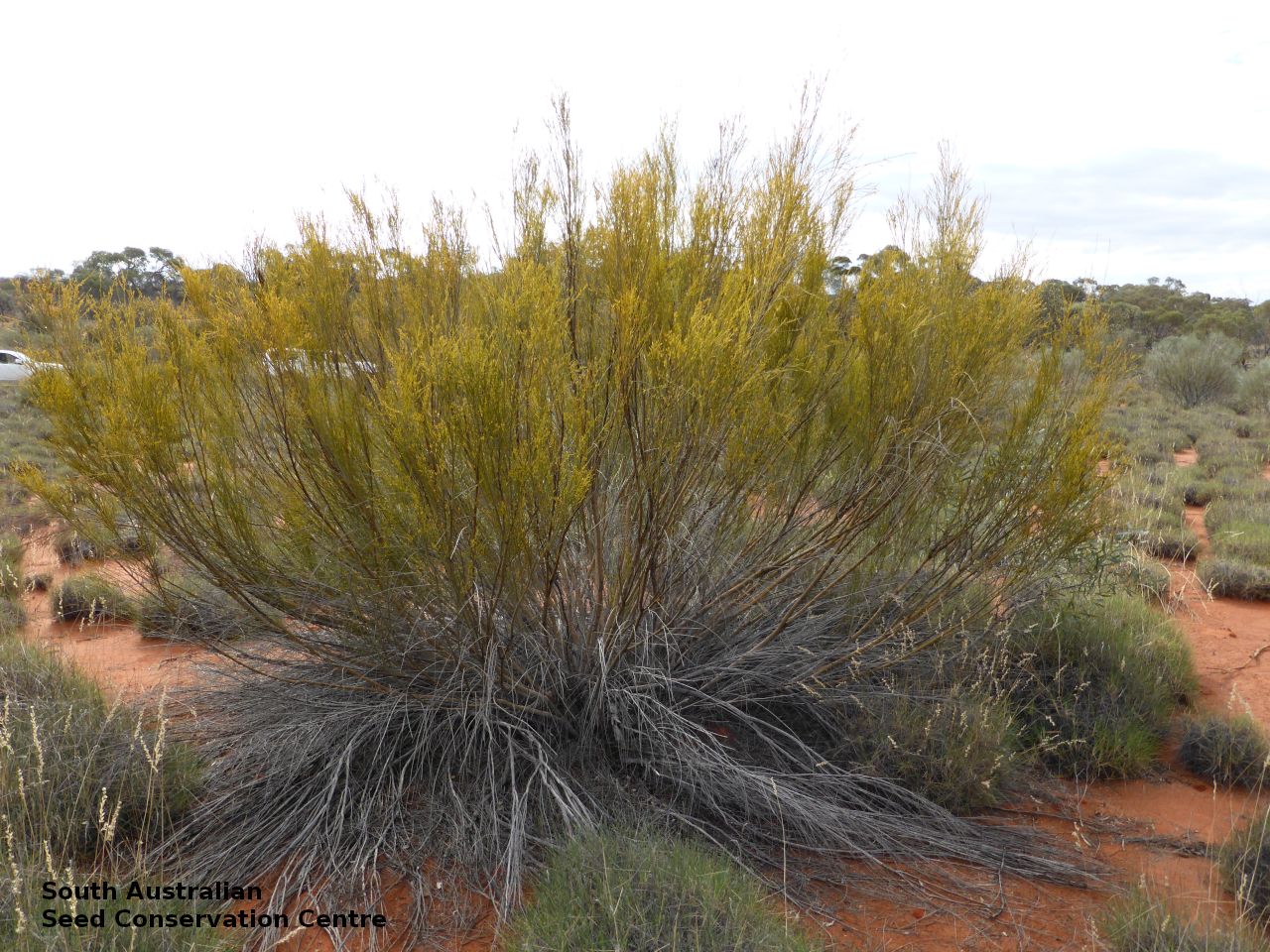
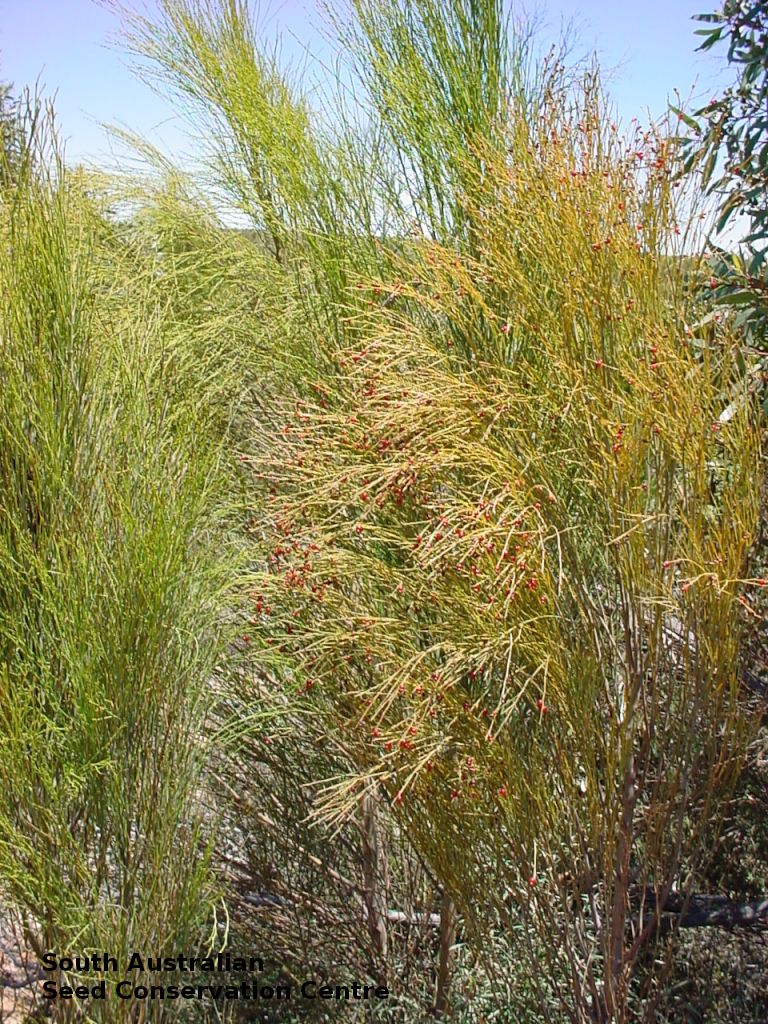
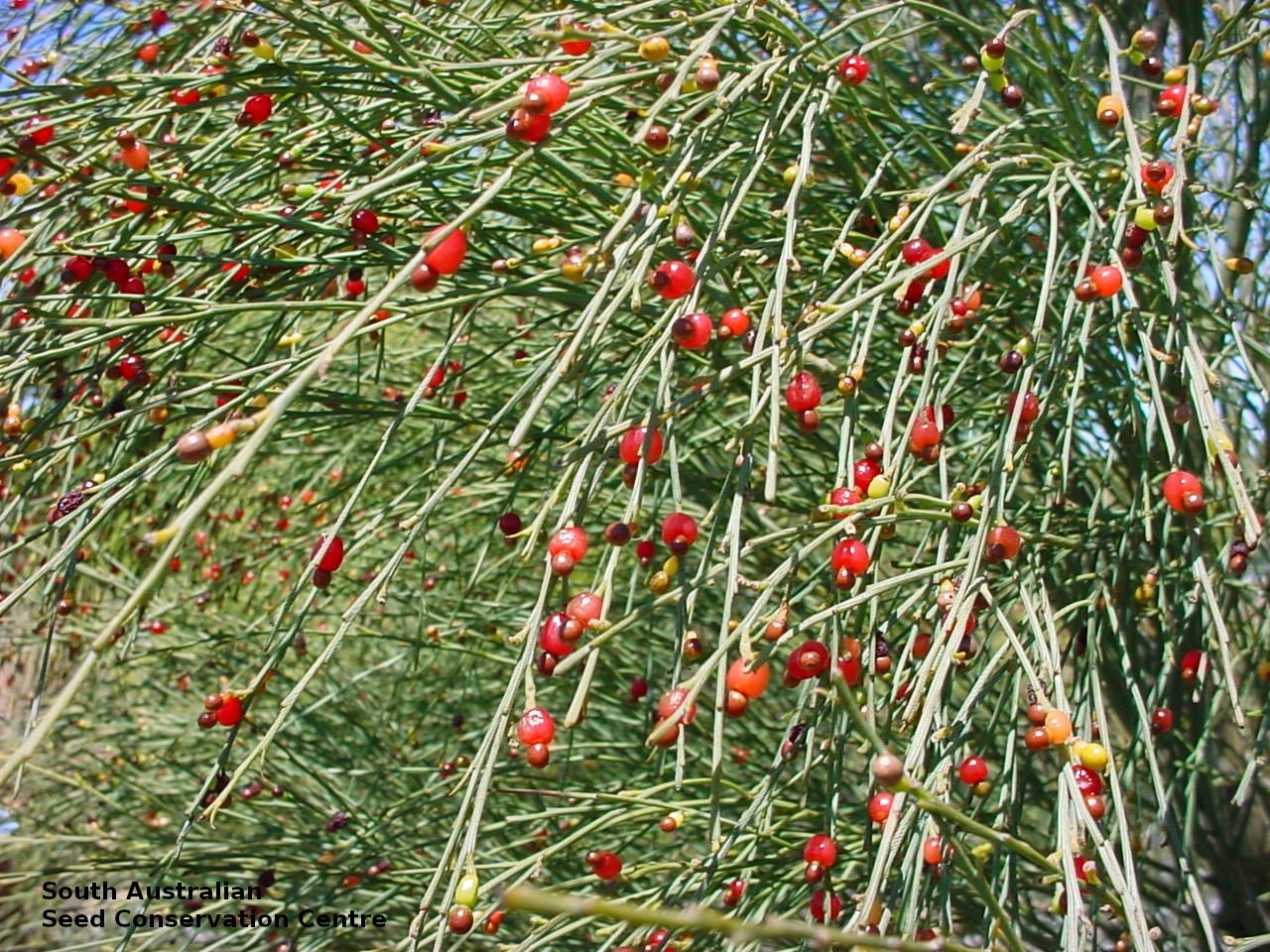
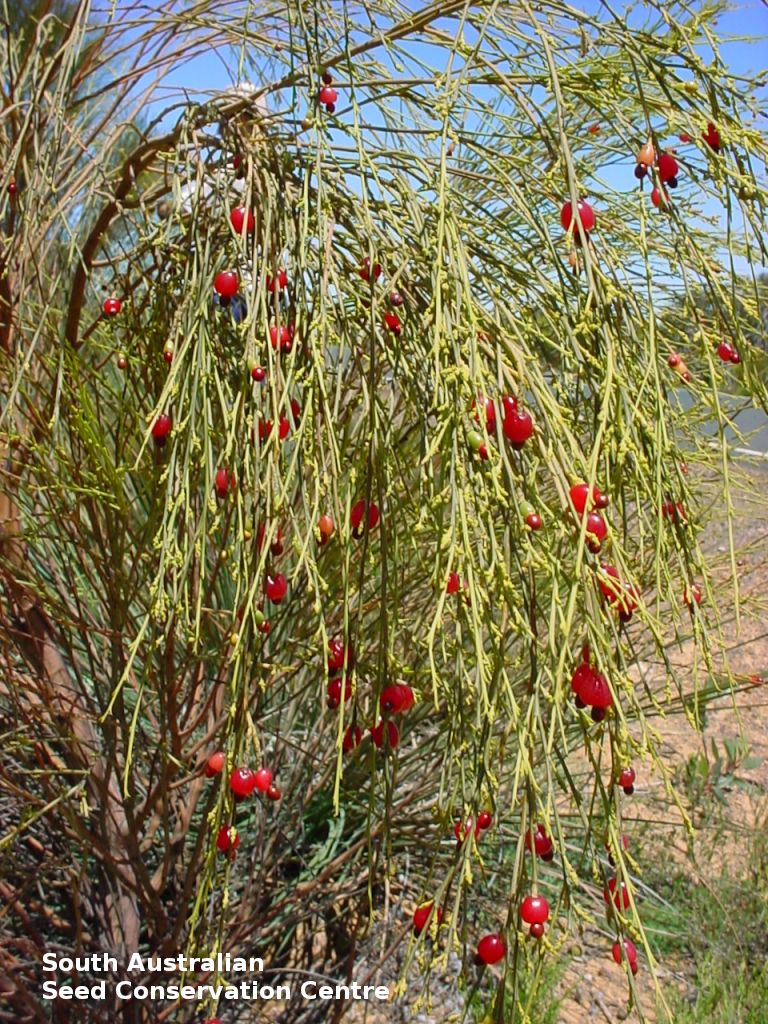
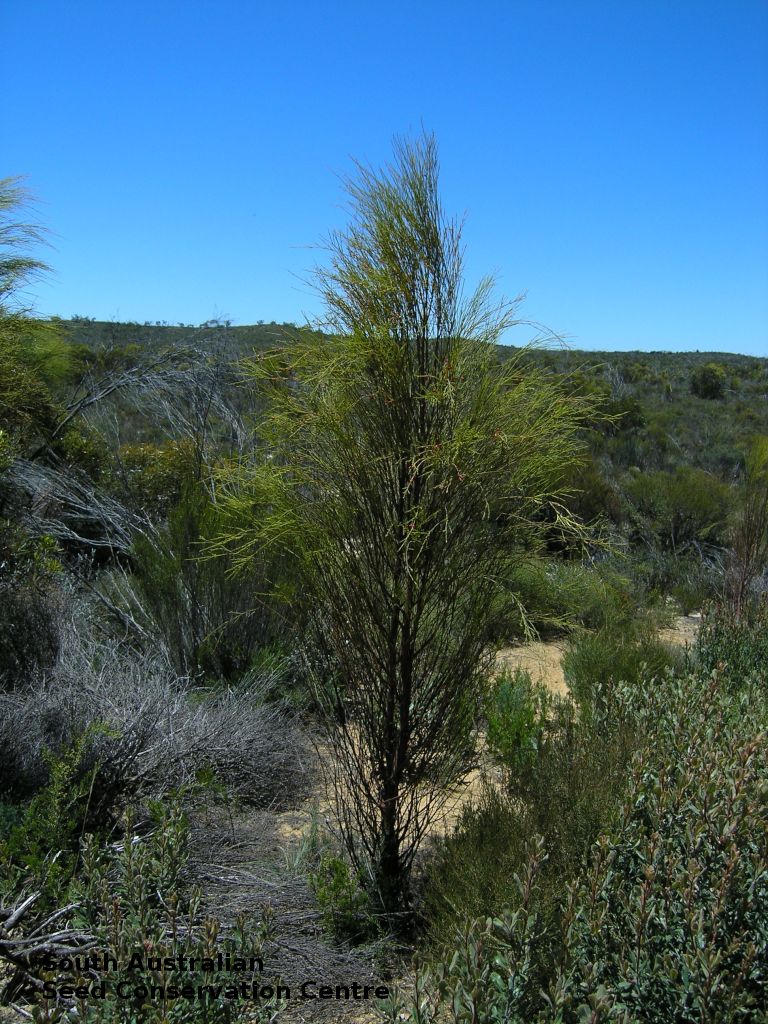
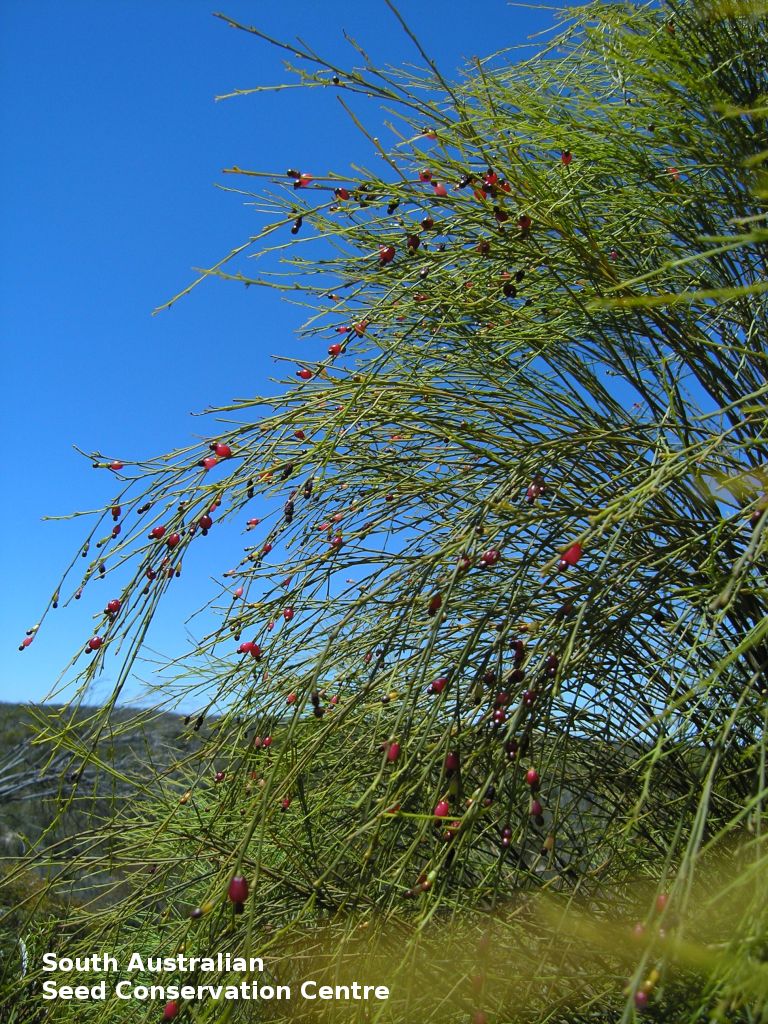
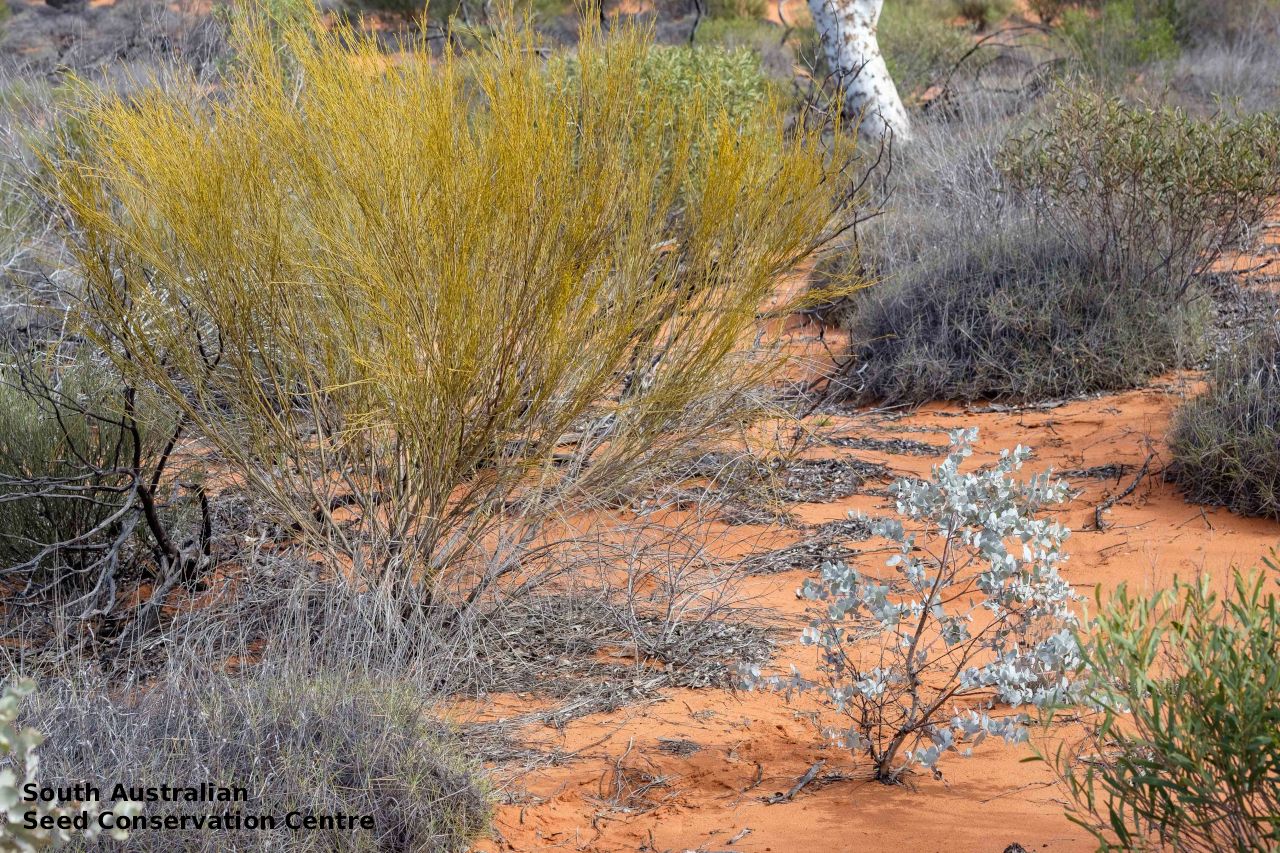
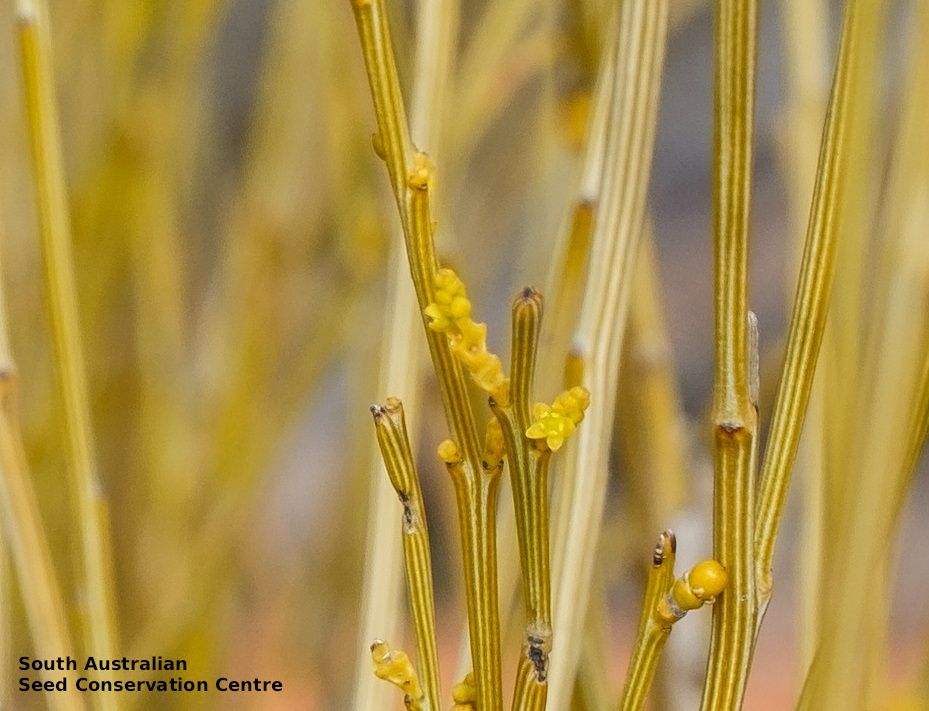
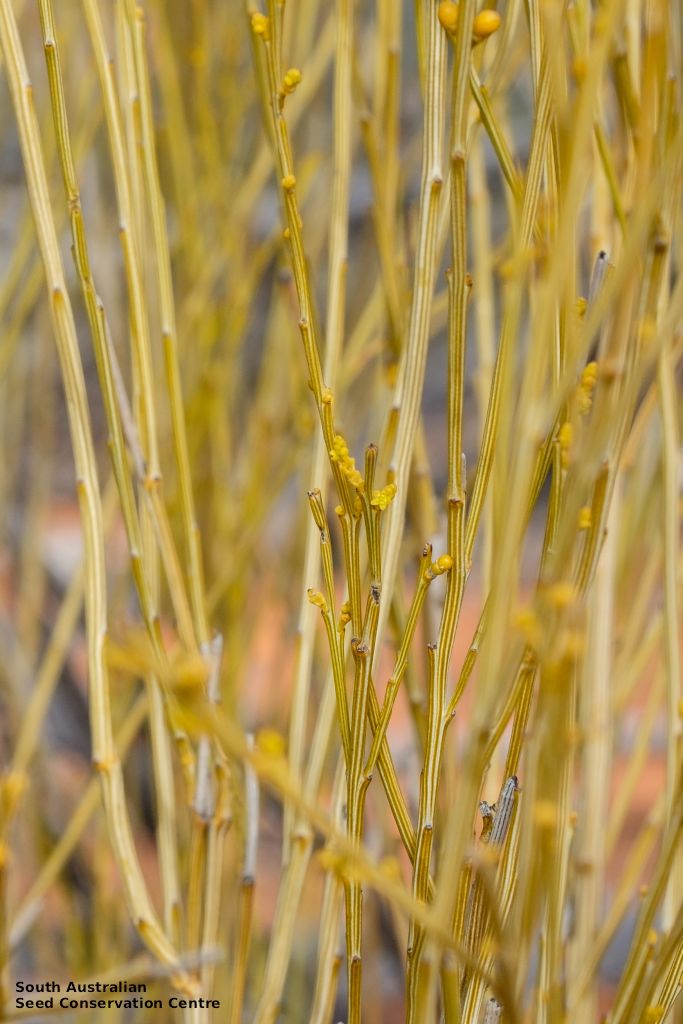
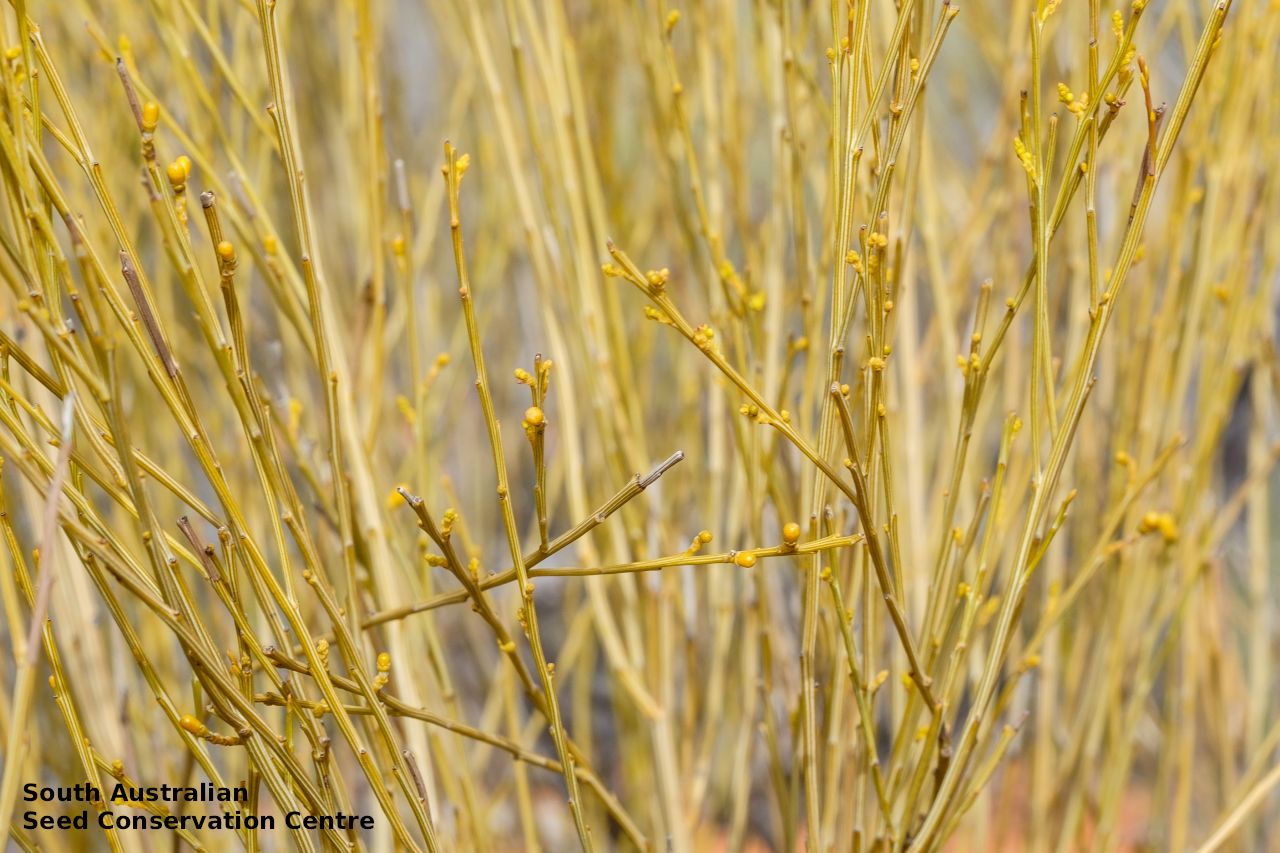
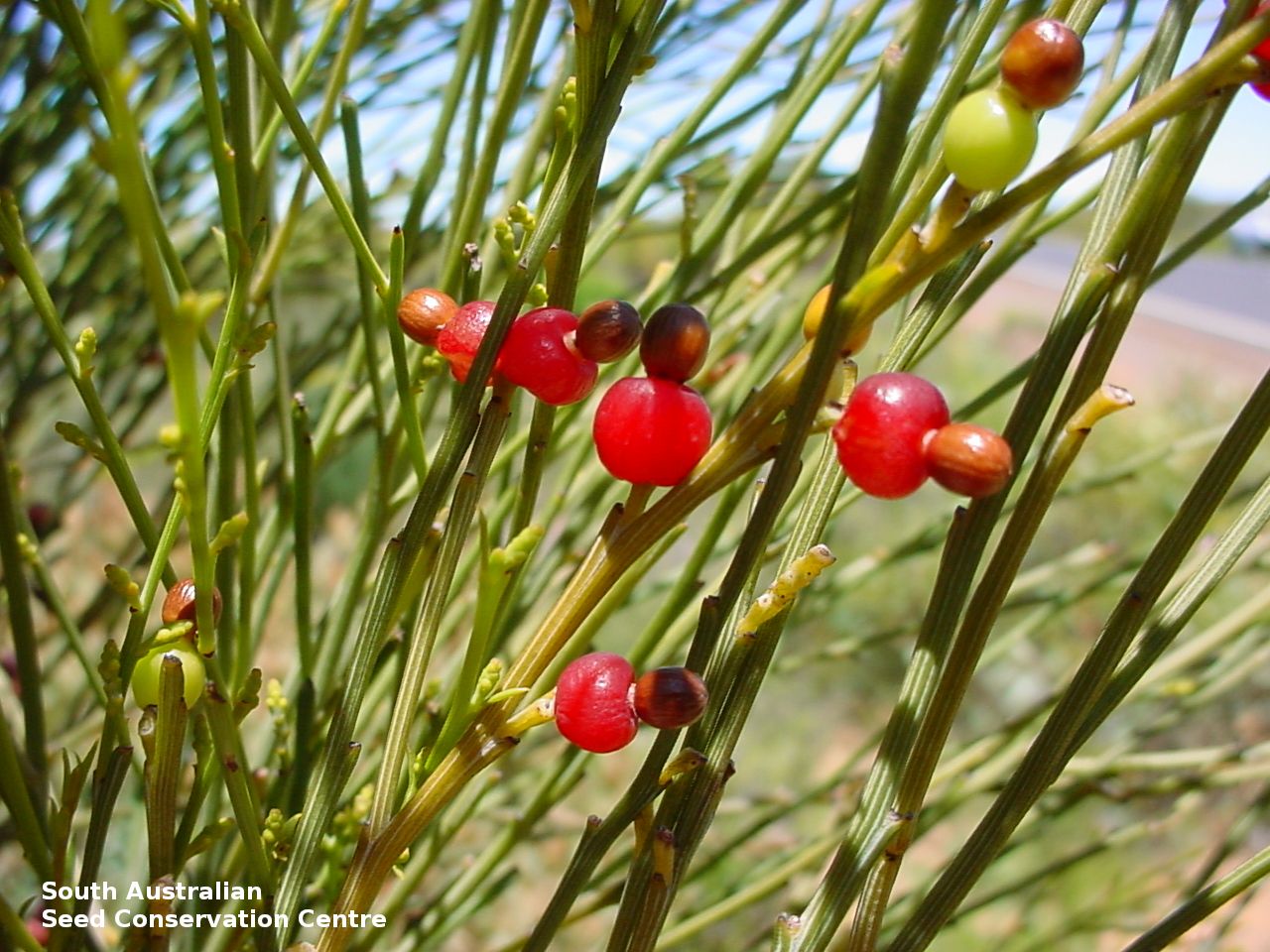
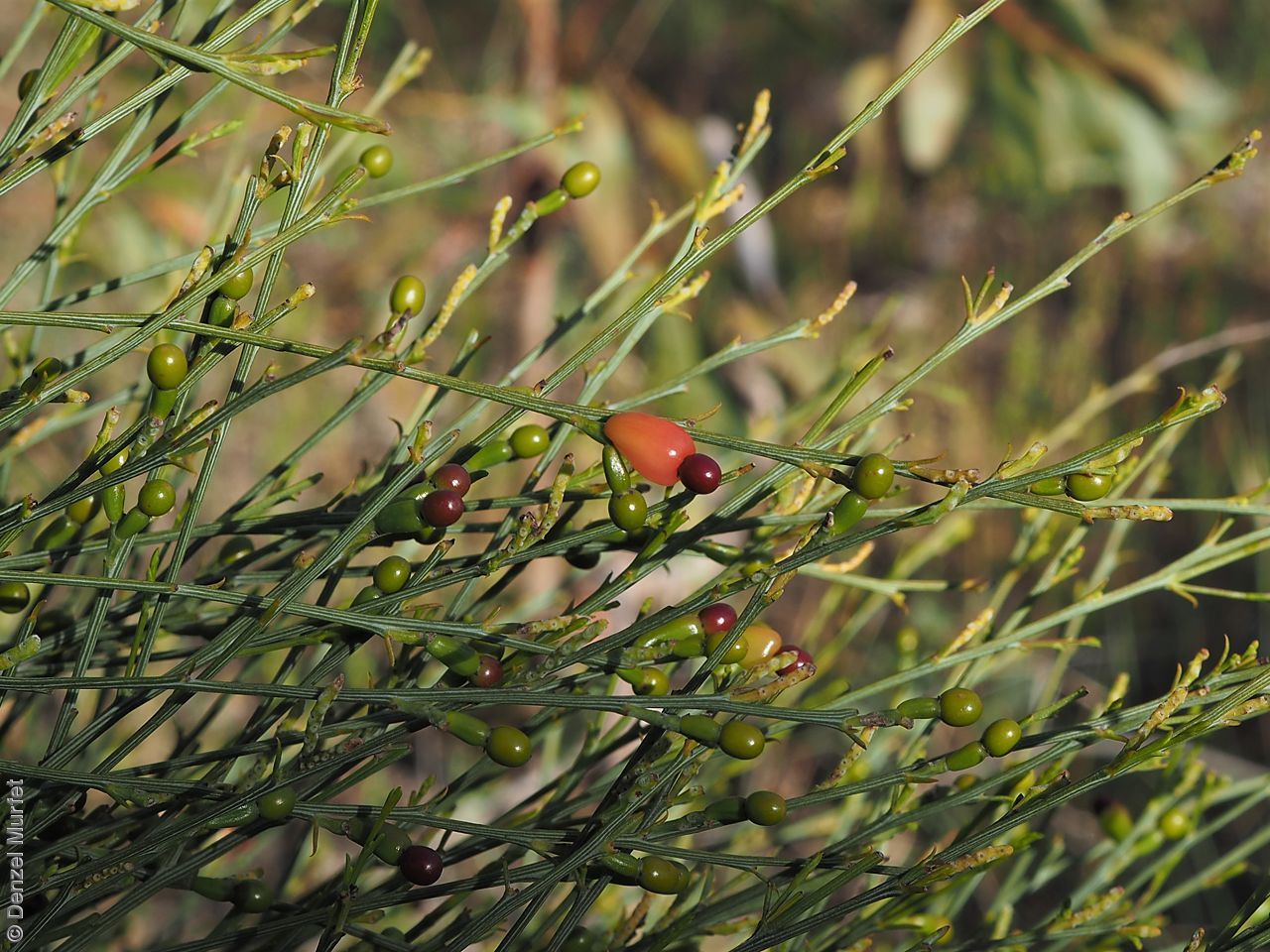

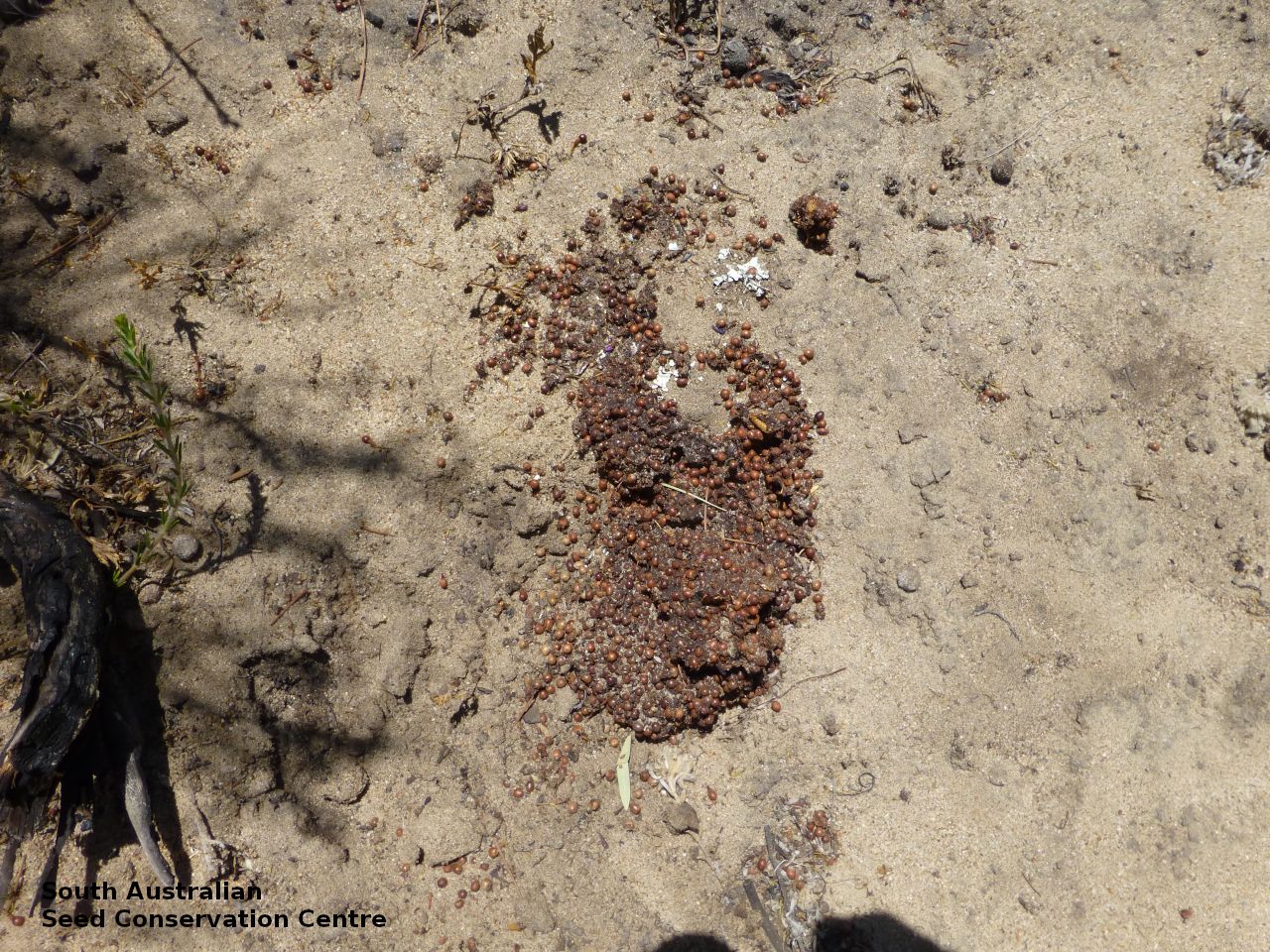
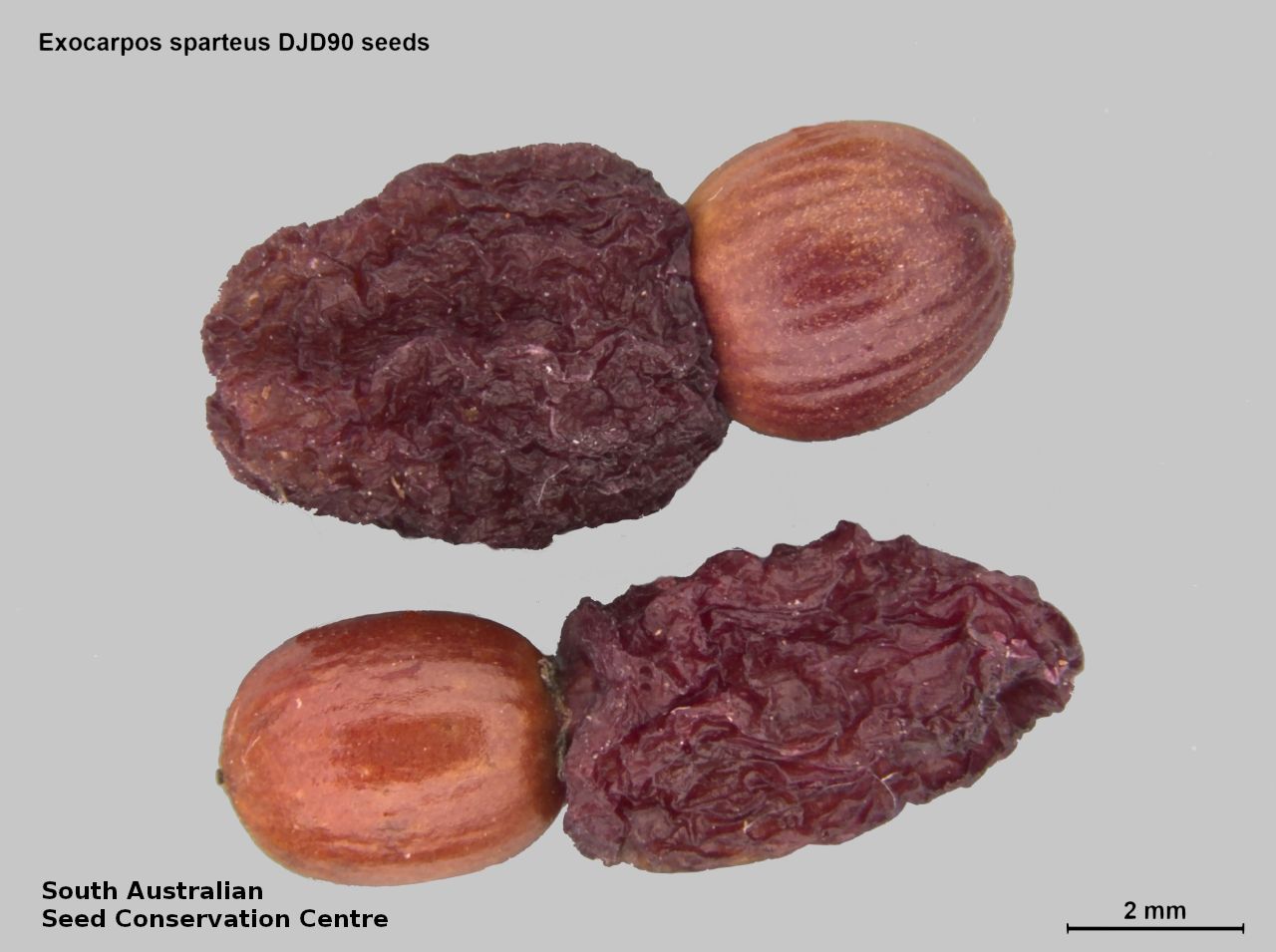
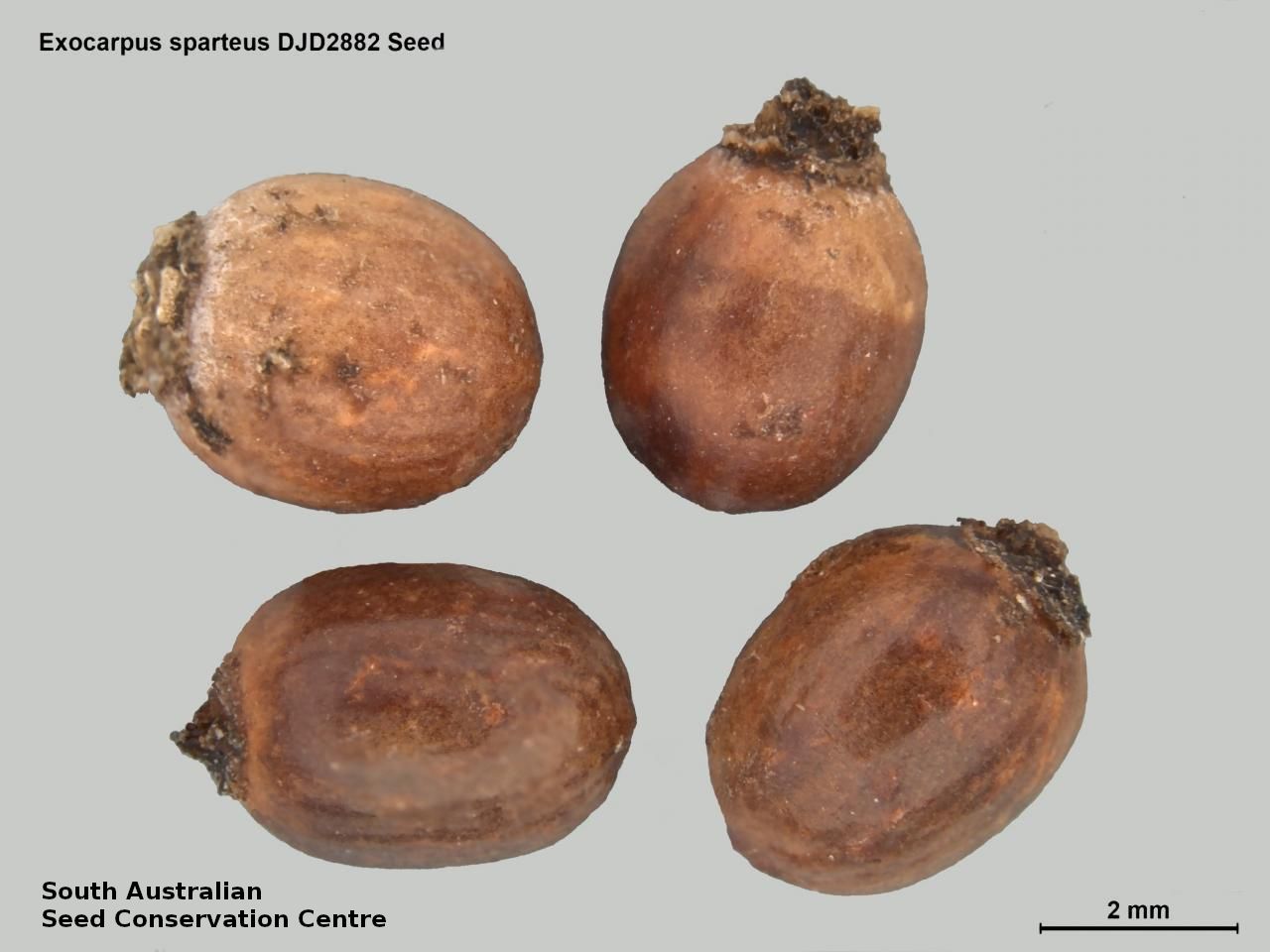
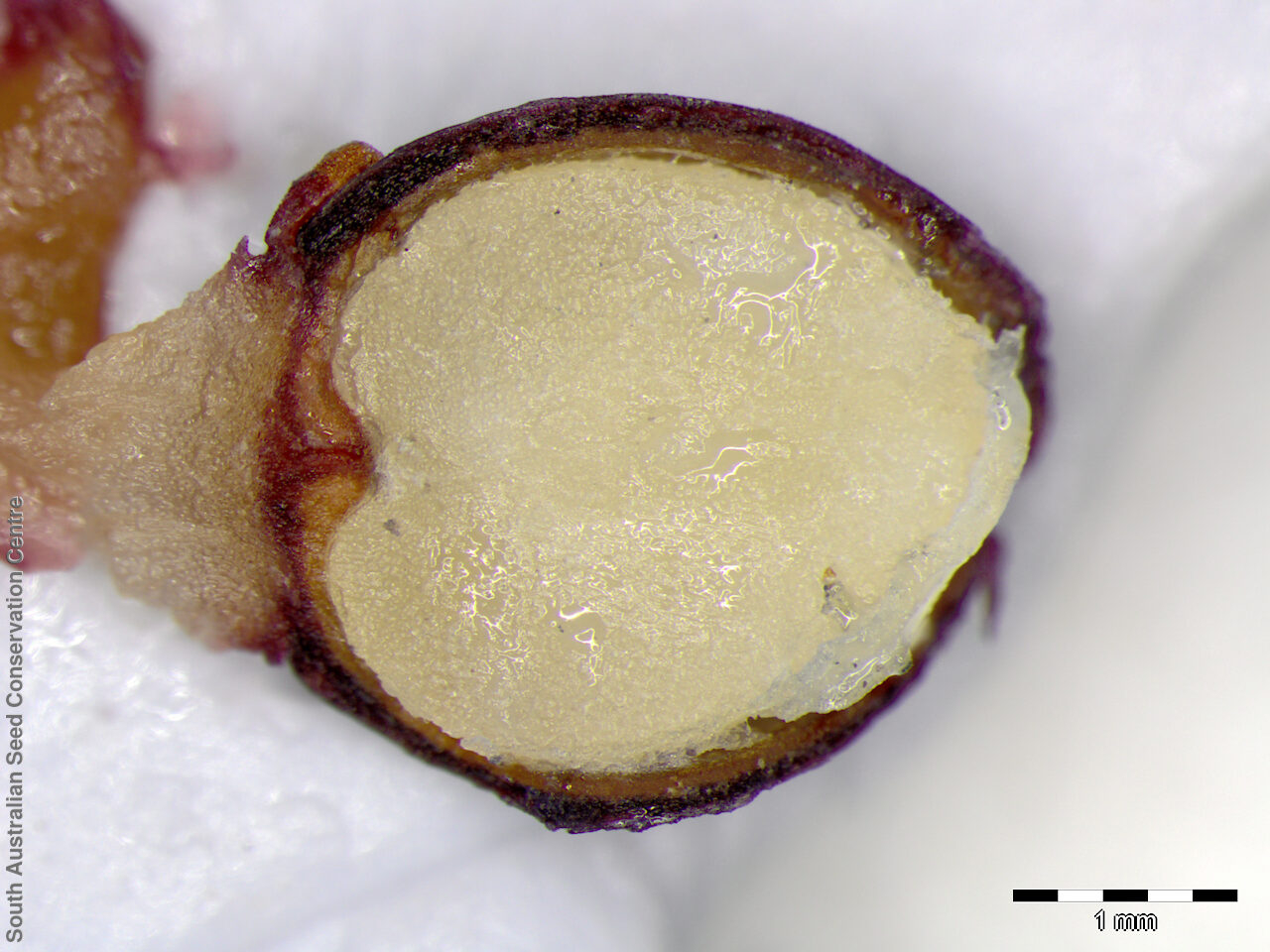
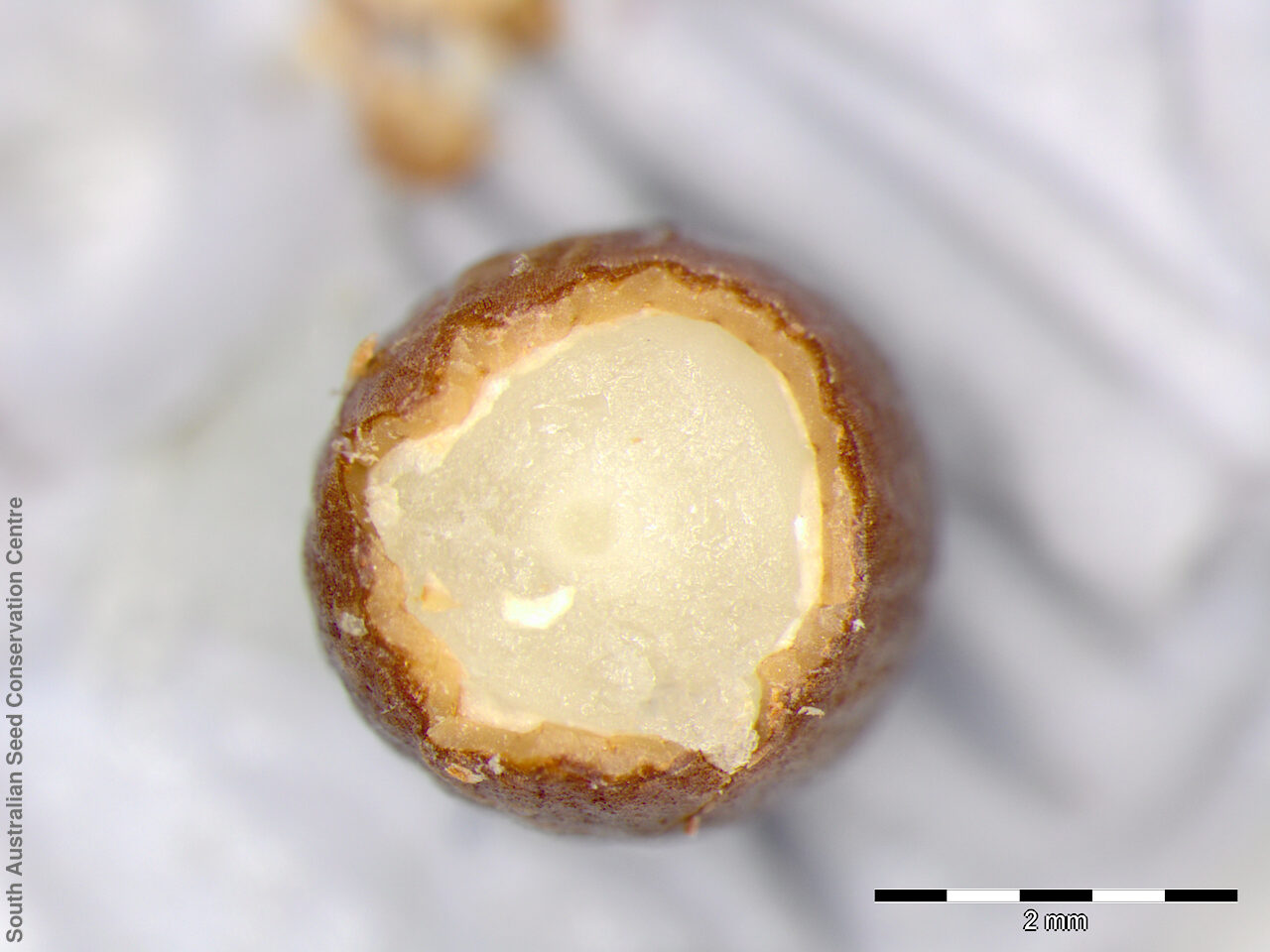

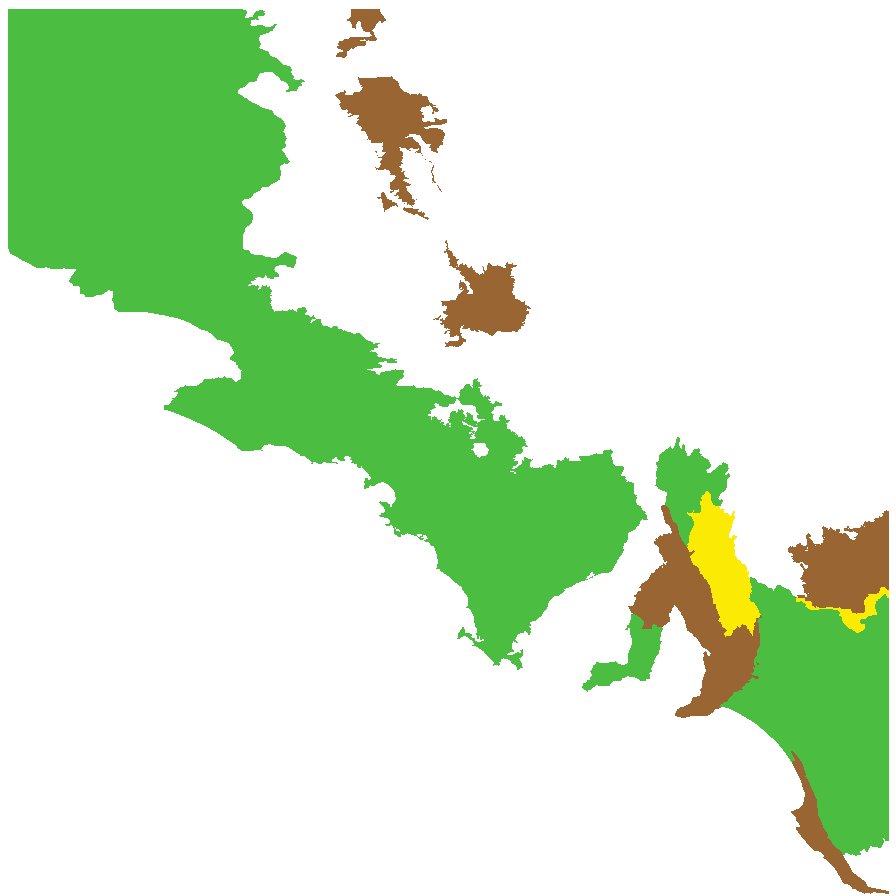
Botanical art
Prior names
Exocarpus spartea, orth.var.
Exocarpos spartea, orth.var.
Exocarpus sparteus, orth.var.
Xylophyllos sparteus
Exocarpos glandulaceus
Common names
Broom Ballart
Slender Cherry
Etymology
Exocarpos from the Greek 'exo' meaning outside and 'caryon' meaning nut, referring to the succulent pedicel resembles a pericarp below the nut. Sparteus means resembling the genus Spartium or weaver's broom.
Distribution and status
Found in the north-west and southern parts of South Australia, growing in mallee communities on sandy soils. Also found in all mainland States. Native. Common in South Australia. Common in the other States.
Herbarium regions: North Western, Lake Eyre, Eyre Peninsula, Northern Lofty, Murray, Yorke Peninsula, Southern Lofty, South Eastern, Green Adelaide
NRM regions: Adelaide and Mount Lofty Ranges, Alinytjara Wilurara, Eyre Peninsula, Northern and Yorke, South Australian Arid Lands, South Australian Murray-Darling Basin, South East
AVH map: SA distribution map (external link)
Plant description
Shrub or small tree to 6 m high with pendulous branches. Leaves reduced to linear-lanceolate long scales to 7 mm long. Flowers sessile in pedunculate spikes 4-18 mm long, yellow-green. Flowers mainly during spring and autumn. Fruits are fruit consists of two parts; fleshy bright red pedical (top part) and orange to red-brown ovoid to globular nut (bottom part). Seeds are woody brown globular seed to 5 mm long and 4 mm wide, with a fleshy red aril at one end. Seed embryo type is linear underdeveloped.
Seed collection and propagation
Collect seeds between January and May. Collect maturing fruits, the top aril is large, succulent, pink or red and bottom bit is hard and orange to brown. Leave fruits to dry and harden before storing. Fleshy aril can be removed but it can be stored with the seed. Store the seeds with a desiccant such as dried silica beads or dry rice, in an air tight container in a cool and dry place. Predation of seeds can be high, however, seed viability is also high. From one collection, the seed viability was high, at 90%. This species is generally difficult to germinate, it has morphophysiological dormancy and complex germination requirements.
| Location | No. of seeds (weight grams) | Number of plants | Date collected | Collection number Collection location | Date stored | % Viability | Storage temperature |
|---|---|---|---|---|---|---|---|
| BGA MSB | 3,300 (178.5 g) 3,300 (178.5 g) | 100+ | 18-Jan-2005 | DJD90 South Eastern | 28-Mar-2006 | 90% | -18°C |
Number of plants: This is the number of plants from which the seeds were collected.
Collection location: The Herbarium of South Australia's region name.
% Viability: Percentage of filled healthy seeds determined by a cut test or x-ray.